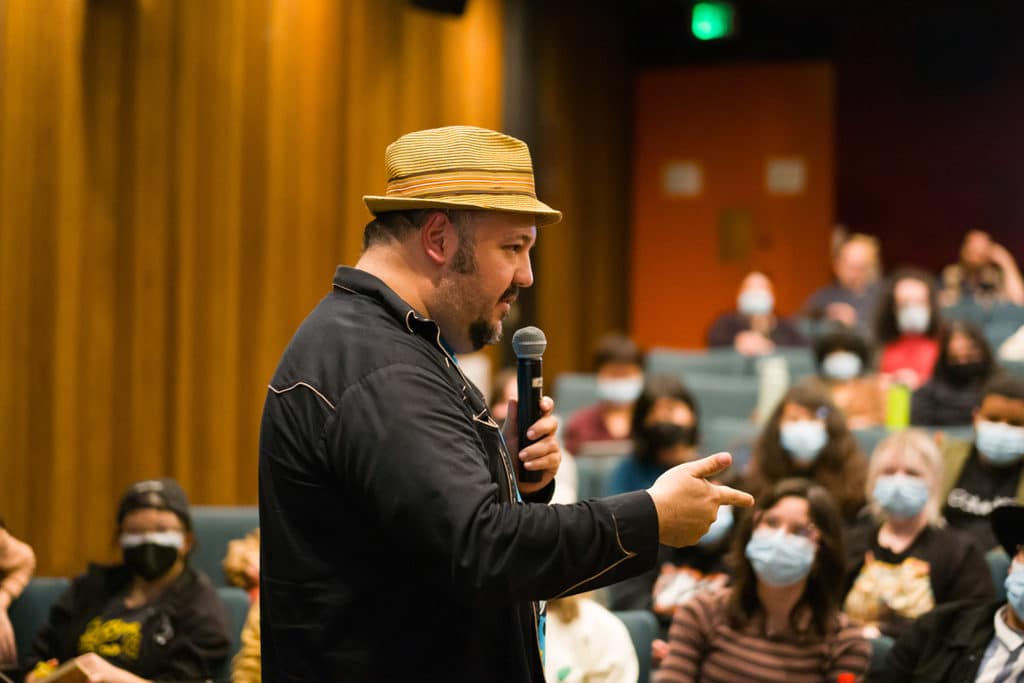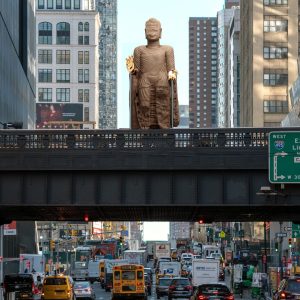A steady stream of students poured into the Bijou the afternoon of Thursday, Jan. 18 to attend one of the season’s last Character Animation Winter Session Talks. Joining the series was animator, writer, director, and CalArts alum Jorge R. Gutiérrez (Film/Video BFA 97, MFA 00), whose illustrious career is a constellation of larger than life characters, vibrant Mexican iconography, and unconventional yet heartwarming stories.
The Bijou was abuzz with eagerly listening students as Character Animation Program Director Maija Burnett introduced Gutiérrez, who would deliver his presentation followed by a 15-minute Q&A session. He promptly launched into a dynamic talk titled From Terrified Art & Film Student to Creator & Director, beginning with his upbringing in Mexico City and Tijuana before moving to California to study at the Institute.
Gutiérrez was admitted to CalArts as a high school junior; he related the tale of how a backup folder of his vivid paintings saved him from initial rejection by Jules Engel, then head of Experimental Animation, at CalArts’ portfolio fair. Surrounded by many similarly talented peers for the first time, he resolved to stand out with his work ethic: “I’m just gonna outwork everybody.”
If he was given a character design assignment, he would make 10 and pick the best one to submit. To avoid irking his peers with his overachieving, Gutiérrez secretly seized every opportunity to learn, even taking classes without credit. He found a way to connect otherwise disparate homework assignments without placing any value on them beyond academics, enabling him to produce large volumes of work without personal attachments. His six years at CalArts were spent improving his craft—all while nobody was looking.
Gutiérrez’s efforts were rewarded with a Student Emmy Award for his stop-motion thesis film “Carmelo,” which led him to begin pitching an outline of The Book of Life to different studios. He was consequently advised to create a series before a full film, finding bursts of success with projects like his 2011 short “El Macho,” which earned 20,000 views in one night.
“The work matters more than the results,” said Gutiérrez. “And I love work. I love making things.”
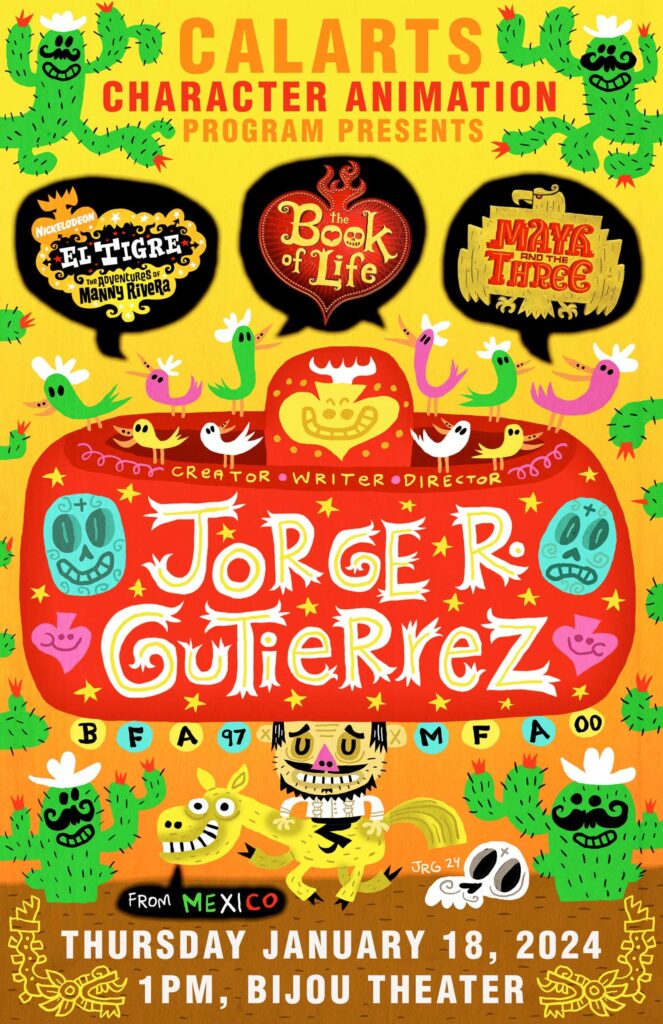
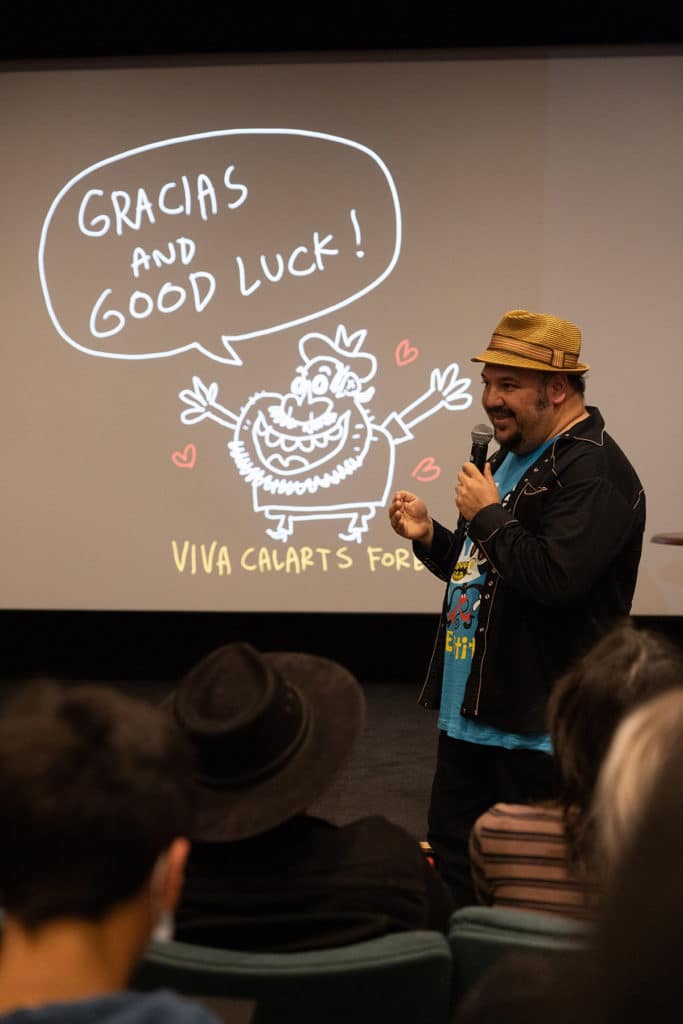
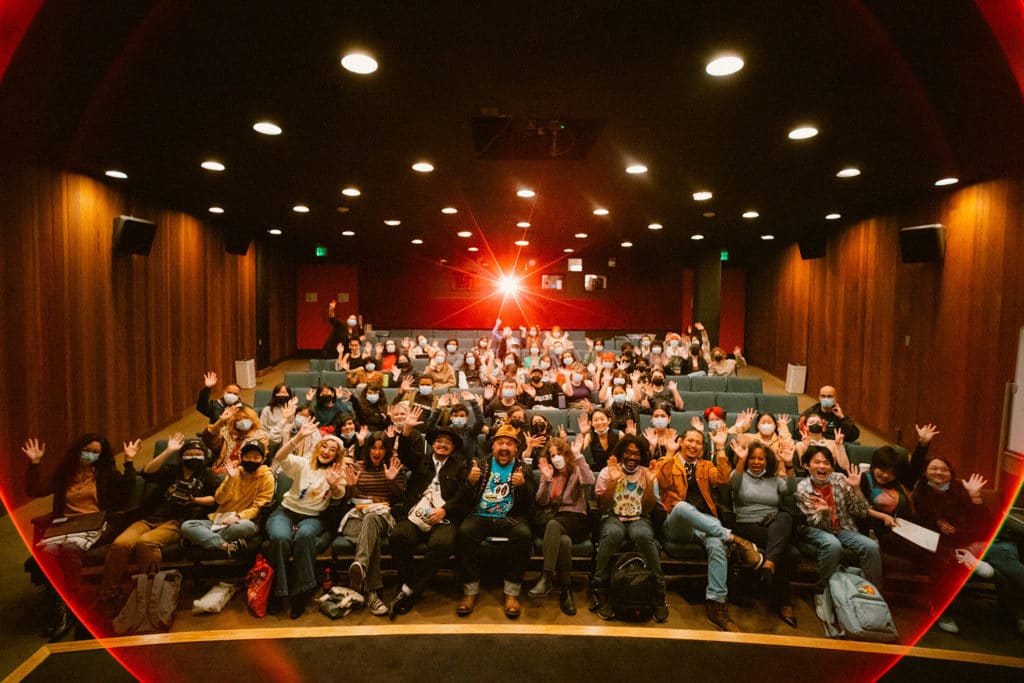
This passion and drive propelled him to continue working amidst a slew of hiccups, namely series cancellations and departing projects when studios attempted to steer his vision into entirely different directions. Alongside his wife and frequent collaborator Sandra Equihua, Gutiérrez tirelessly carved out a career from internships, freelancing, personal projects, and film pitches. Three of his most popular works—animated Netflix miniseries Maya and the Three, the Nickelodeon series El Tigre: The Adventures of Manny Rivera, and 20th Century Fox’s Annie Award-winning animated feature film The Book of Life (2014)—each took seven years to complete.
Gutiérrez shared that while he was frequently warned that some of his traits and values could spell ruin for his career—notably, his work ethic, neurodivergence, love of his Mexican culture, and even his love of failure—he attributes his success to these very factors.
When asked by a student during the 20-minute Q&A portion about how to tell a deeply personal story with wide appeal, Gutiérrez noted his own struggles creating works inspired by Mexico as a student. By overexplaining cultural nuances in his projects during critiques, his peers commented that they “liked the explanation more than the thing.” He consequently made a switch by having his characters drive the narrative, and showcasing his culture as a setting.
“The culture is the setting and the canvas, but the story has to be universal,” said Gutiérrez, who has found his series and films embraced by viewers from all corners of the globe.
These days, Gutiérrez maintains a busy schedule trying his hand at different things, including creating music videos, voice acting, exhibiting his paintings at galleries, getting into the toy business, shooting commercials, and painting murals. Animation, of course, is still part of the equation—Gutiérrez hinted at an upcoming limited series, as well as a sequel to Maya and the Three.
Some Tidbits We Learned from Gutiérrez
- Gutiérrez’s nickname is “Super Macho,” given to him by his grandfather at the age of six. His grandfather described “macho” as stereotypical masculinity, sometimes afflicted by a conformist or adversarial attitude. He then encouraged his grandson to go the “super macho” route—one marked by integrity and willingness to do the right thing, even when the going gets tough.
- The first movie he ever saw in theaters was Pinocchio, and said that he was captivated by the power of imagination, themes of death, and the magic of animation. He was obsessed with the film to the point that he would often dress up as the character, stating that he too wanted to be a “real boy.”
- Gutiérrez is among the few CalArtians to study in both Character Animation and Experimental Animation.
- Then-CalArts President Steven Lavine once called Gutiérrez into his office upon learning about his ambitious plan of completing a BFA in two semesters, as his parents only had the funds for an academic year. Lavine made a deal that if he could earn a high pass on two year’s worth of classes, he would find a way to help Gutiérrez continue his education. Gutiérrez became the first to ever accomplish this despite Lavine having made the same deal with other students in the past, and was given a full scholarship.
- Gutiérrez is autistic, which he credits with allowing him to hyperfocus and perceive the world through a uniquely creative lens.
- Growing up in Mexico City, Gutiérrez was known as the kid who liked to draw. When his father once asked him why, he said, “I don’t know,” to which his father replied, “That is the best answer.”
Related: Read more about Gutiérrez in issue five of The Pool.
